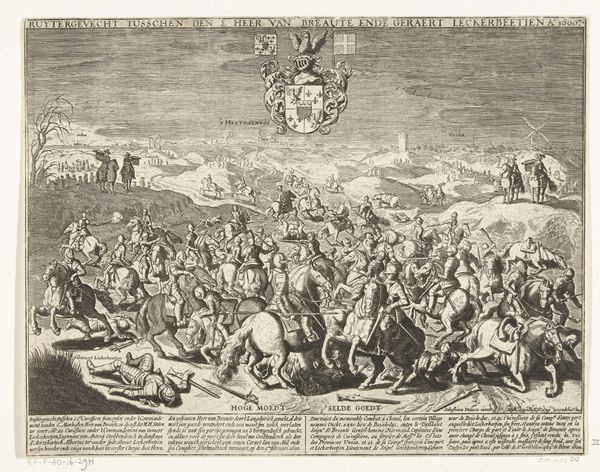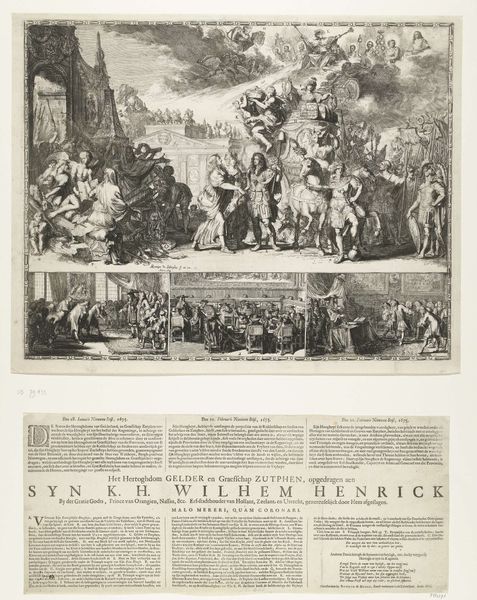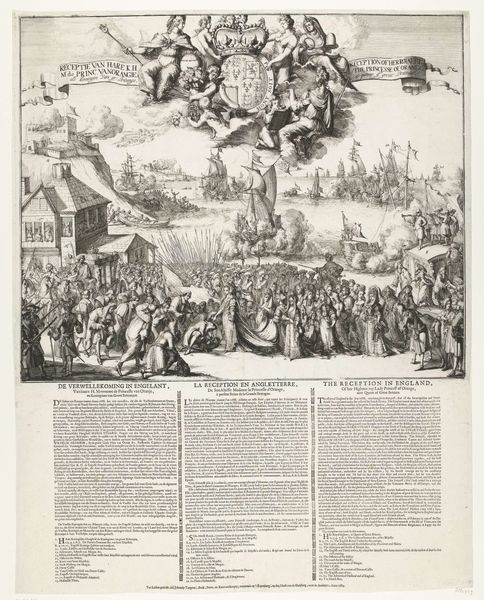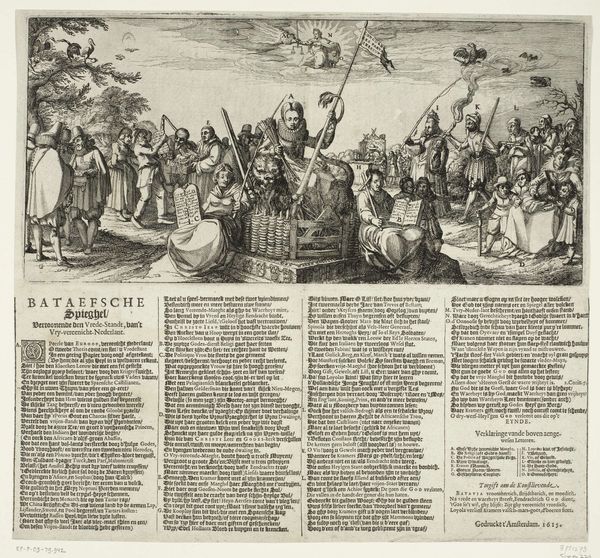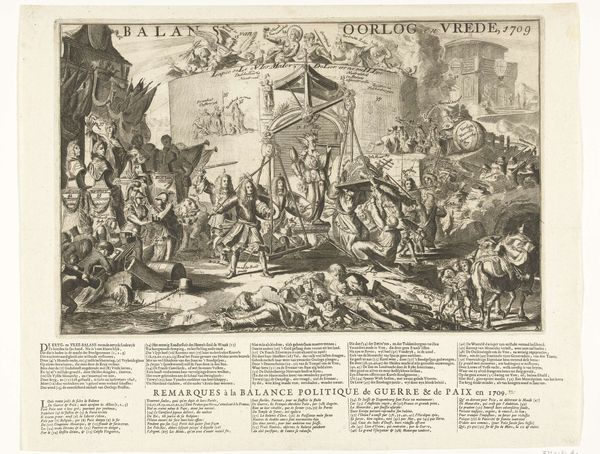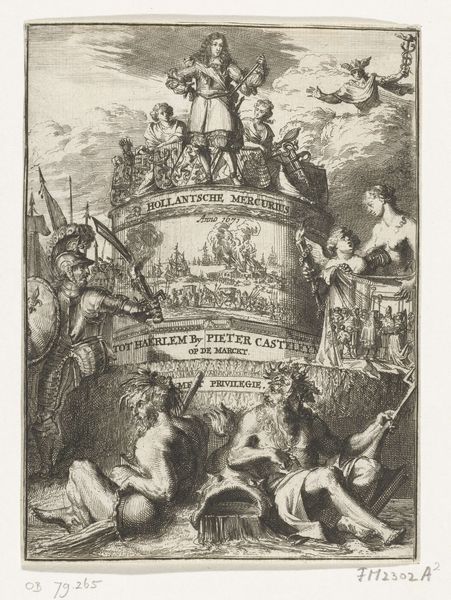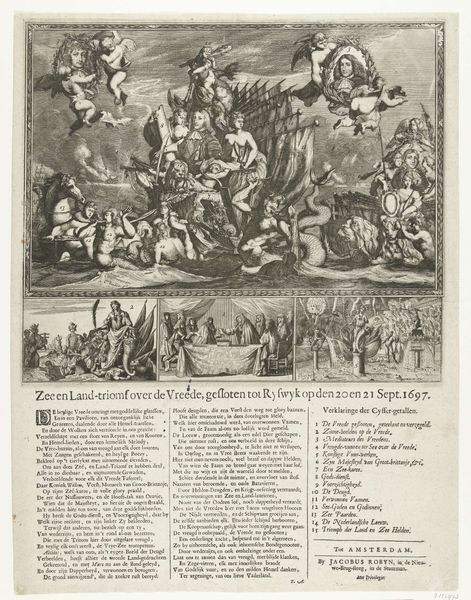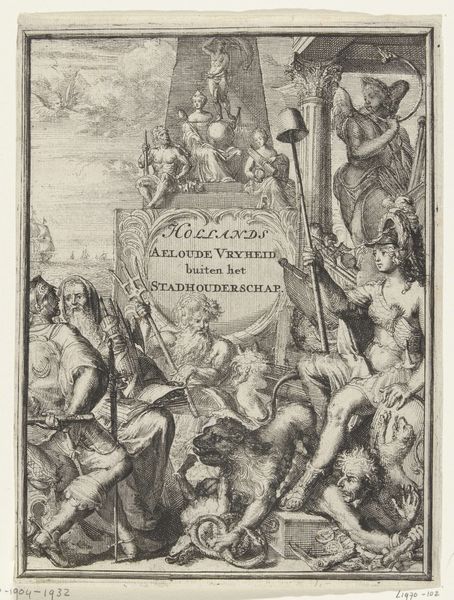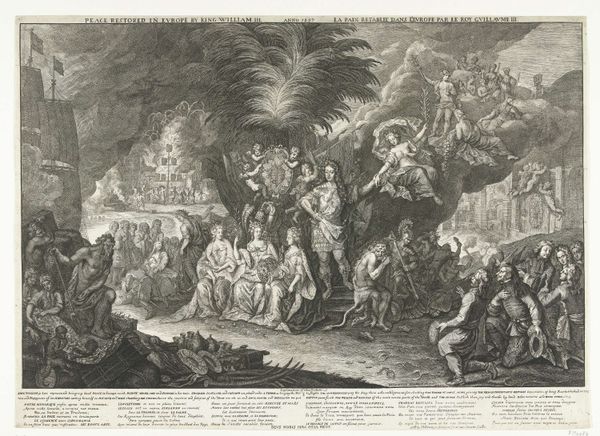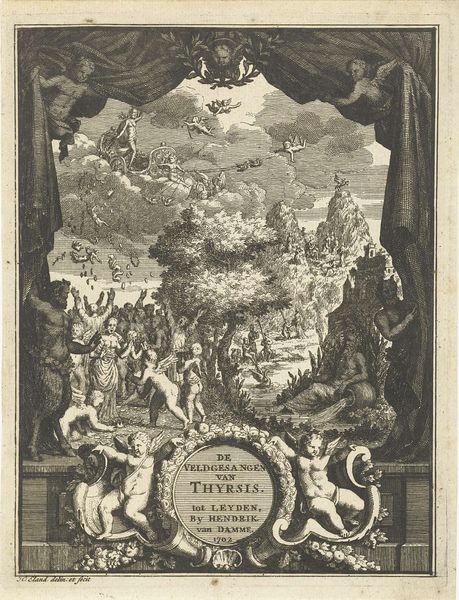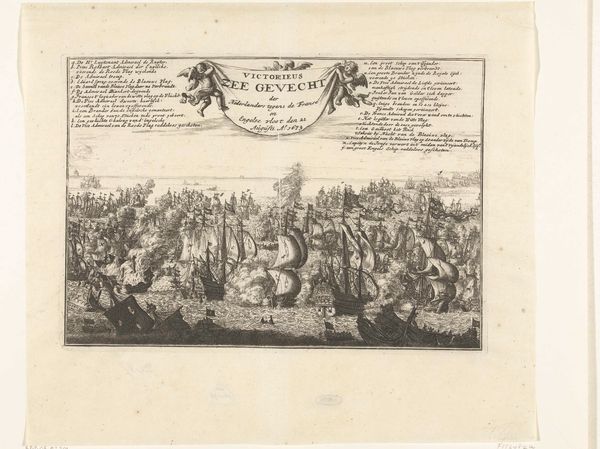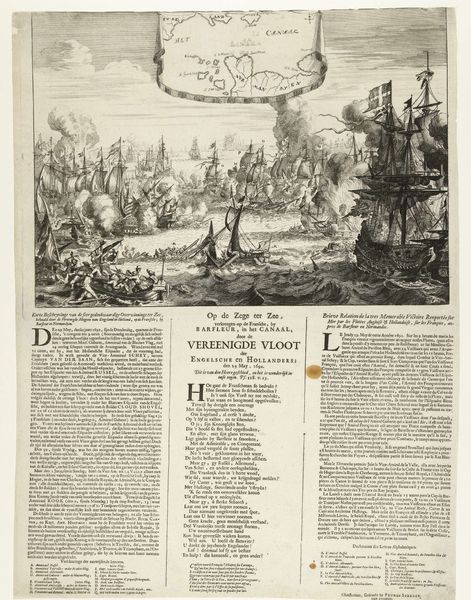
print, engraving
allegory
baroque
symbol
old engraving style
landscape
personal sketchbook
history-painting
engraving
Dimensions: height 705 mm, width 550 mm
Copyright: Rijks Museum: Open Domain
Curator: This engraving by Romeyn de Hooghe, created in 1678, is titled "Allegory on the Ratification of the Peace of Nijmegen." It's currently held in the Rijksmuseum collection. What's your initial impression? Editor: A cacophony of figures! The composition is incredibly dense, with little breathing room. The texture created by the engraving technique adds to this sense of visual busyness. The contrast between the dark lines and white space creates a dramatic effect, almost oppressive in its detail. Curator: Indeed. De Hooghe produced this work to commemorate the treaties signed in Nijmegen, which brought an end to the Franco-Dutch War. Beyond its aesthetic qualities, this print functions as a potent form of political propaganda. Notice the central female figure, the personification of Peace. Editor: Yes, she stands atop what appears to be a decorated pedestal. The portraits encircling her suggest the key players involved in the peace process. Formally, the artist has used the device of the framing portraits to build up a stable form and give structure to the otherwise chaotic crowd. Curator: Precisely. This portrayal of Peace is elevated, almost divine, literally standing above the turmoil and celebrating those perceived to have facilitated the agreement. However, what about those writhing figures at the base? They appear to symbolize the suffering and devastation caused by the war. Consider how this imagery might have resonated with different populations. How did this depiction reflect or perhaps distort the lived experiences of people affected by this conflict? Editor: Visually, they introduce dynamism and counterpoint in the composition, though they look extremely disturbing, and their physical arrangement at the foot echoes their low political standing. They accentuate the central icon’s serene, untroubled presence. Curator: Furthermore, the historical context is critical to a full appreciation. While the treaties brought peace, they also cemented Dutch economic dominance and established new power dynamics within Europe. The engraving’s symbolic language offers us insights into the victors’ perspectives, but must also be considered through critical lenses, keeping in mind perspectives of people most affected. Editor: I concur; analyzing its composition helps reveal how the artist structured the message. Considering all these formal components allows us to understand how the print's narrative functioned, visually, but more analysis, as you suggest, is required to explore how it functioned politically. Curator: By engaging with both the historical narratives and de Hooghe's aesthetic choices, we gain a more profound understanding of this moment in history. Editor: Indeed. The tension between formal control and expressive chaos speaks volumes.
Comments
No comments
Be the first to comment and join the conversation on the ultimate creative platform.
